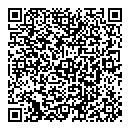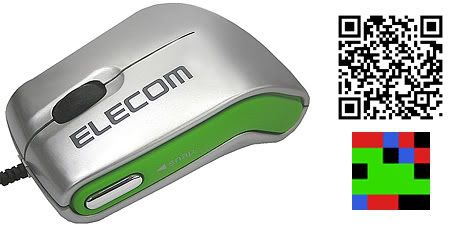This is probably one of the most complete PWC solutions I have seen to date, and it proves that there is more to scanning a 2d code than being connected to a website.
Recently OP3 announced Coca Cola Mexico would be putting
40 million ShotCodes on Sprite bottles for camera phones to scan. Look what
5o9 can offer
after the users click.
Scan a 2d code (physical world hyperlink PWH), in this case a
ShotCode and get connected to an Internet site. With 5o9, your personal preferences (which you already provided) are
matched up with your location and coupons are delivered to your cell phone. (I don't know if their solution works with some of the other 2d codes)
5o9 might just have the complete solution for physical world connection commerce.

Wave your cell phone at the POS terminal retailer for the discount.
I think this platform could be incorporated into almost any type of mobile search, but the PWH adds the direct connect feature.
Here's the kicker, the retailer's POS terminal is scanning the coupon, not the mobile phone. Your phone is just acting as the "carrying case" for the coupon.Physical world hyperlinks, permission marketing, location based services and mobile commerce all in one.
Could Google use this for their
Pay-Per-Coupon application?
5o9™ Me
solves a multitude of commercial and technological problems, including nearly all of the business problems identified by the Mobile Marketing Association (MMA).

5o9’s unique Pushing with Permission™ capability provides the vital link to consumer acceptance of mobile marketing. By respecting customer preferences for sharing information, businesses can deliver greater value and relevance to their customers and marketing partners.
If you have access to a Windows Mobile 5.0 PocketPC they can send you the client side code and you can run all of the demo’s live in real time.
Not only can 5o9™ do mobile coupons with barcodes in real time, they can also do it based upon the users location as it relates to a business e.g. Starbucks, Grocery stores etc.
This was done to demonstrate for a large US retailer how he could notify his customers of an in store promotion. The GPS notifies the user of the nearest store offering the promotion, gives the user a map to the store AND sends them a coupon which is time sensitive.

All of this is based off a consumers “personal” opt-in information being transmitted to the content provider. Each of the Check boxes are controlled by the end user (Me)… I can turn them on or off at will.
Also note the other four tabs… GPS for additional real time location information, Phone number for eCRM, Device for knowing what kind of device I’m using and what are its terminal capabilities are and finally a “Starbucks” tab which will tell you the location of the nearest Starbucks to you and offer you a coupon for a discount (time sensitive).
5o9™ simplifies personalization by consolidating the source for entering, storing encrypting and transmitting personal, Who, (contact and preferences), What (device capabilities), and Where (GPS, Zip/Postal code, Area code) data on the user’s device. Once received by the content site, 5o9™ server software makes this data accessible to a company's existing business applications.
There is simply no friction between the impulse buy (scan) and the web site knowing Me. Tie this to a micropayment system and the sky’s the limit

























